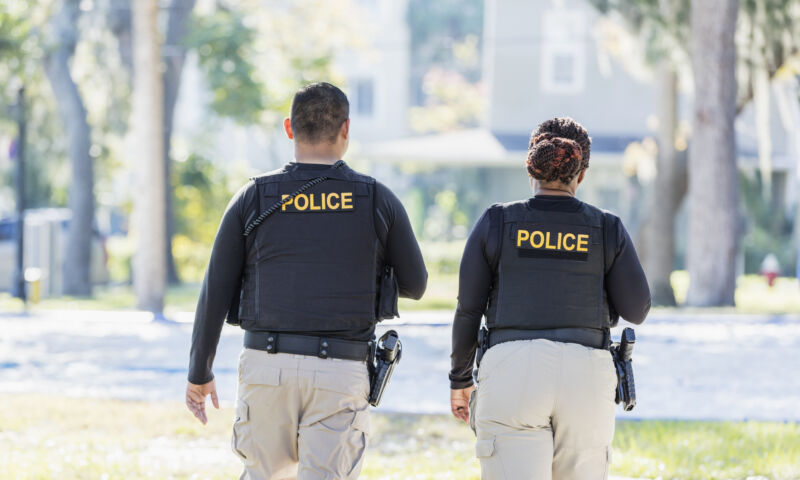A technique called "procedural equity" policing seems to work in reality.

Throughout the course of recent many years, there's been a weighty accentuation on procedures that fall under the idea of "proactive policing.
" These for the most part include distinguishing the region of a city that have the most noteworthy crime percentages and applying more forceful policing in those areas.
While there have been a few victories, the methodology has frequently reproduced disdain, as techniques like pause and-search policing produced opposition between the police and the networks they were intended to help.
In a 2018 report on proactive policing, the US's National Academies of Science inspected approaches intended to keep concentrated policing from making grinding with networks.
The report tracked down that one promising strategy, called "procedural equity," needed proof of viability we were unable to tell whether it reliably diminished wrongdoing and additionally further developed local area relations.
Along these lines, a portion of individuals behind the National Academies report chose to change that, running their own controlled concentrate on procedural equity in three US urban communities.
The outcomes aren't unequivocal, however they recommend the procedure could diminish wrongdoing and local area grinding.
By the books
Procedural equity applies to definitely more than policing, however its fundamental standards have a conspicuous use.
The fundamental thought is that any interaction, including policing, ought to be straightforward enough that everybody in question accepts that things are taken care of reasonably.
When applied to policing, this incorporates the deferential treatment of individuals focused on by it.
In down to earth terms, the paper's creators say it includes the police exhibiting nonpartisanship and dependable thought processes, while regarding those locally and permitting them an opportunity to voice concerns.
To see if this approach is successful, the examination group worked with the police divisions in two enormous US urban communities (Phoenix and Houston) and one more modest city (Cambridge, Massachusetts).
Utilizing wrongdoing information, the specialists and police distinguished wrongdoing "areas of interest" in private areas and appointed officials to do concentrated policing in those areas.
At irregular, a portion of those officials were decided to go through concentrated, 40-hour preparing on the utilization of procedural equity in policing.
Preceding the beginning of the review, inhabitants of those areas of interest were overviewed on their perspectives toward police; the overview was rehashed after the review period also.
During the policing time frame, every one of the officials had a specialist ride along for somewhere around one shift to assess how well the police carried out their preparation.
At long last, changes in crime percentage contrasted with the pre-explore benchmark were determined.
It appears to work (with admonitions)
One thing that obviously works is the preparation.
Officials who went through it were significantly more liable to permit local area individuals to express their opinion in questions, showed more deferential way of behaving, and were better at demonstrating nonpartisanship in their collaborations.
(Or if nothing else those communications that a specialist noticed.) One of the admonitions to this study is that the officials might have been more cautious about utilizing procedural equity approaches when they realized they were being watched.
In any case, essentially obviously officials knew how they ought to act.
In any case, capture measurements recommend that this distinction persevered in any event, when the police weren't noticed, as capture rates among officials who got the preparation dropped by in excess of 60%.
This demonstrates an undeniably less forceful way to deal with the local area, notwithstanding the upgraded presence of officials in the areas.
The regions where officials had gone through procedural equity preparing additionally saw wrongdoing drop by 14% contrasted with regions where other police were allocated for concentrated policing.
The one thing that wasn't obviously improved was the manner by which the local area saw the police.
In regions where police undeveloped in procedural equity were doled out, local area overviews demonstrated that individuals saw the police as irritating local area individuals and utilizing superfluous power.
This didn't occur in regions where the officials had gotten the preparation, however generally speaking local area perspectives on the police didn't move.
While on the whole these tests had the option to arrive at factual importace on most measures, the review was too little to even think about doing successful city-to-city examinations, or to break out numbers in light of wrongdoings.
The pandemic additionally begun after the tests wrapped up, which emphatically diminished the reaction rate for follow-up overviews, so the local area perspectives ought to be thought about while considering other factors.
In any case, the work gives some sensibly strong proof that the methodology makes for successful policing and may eventually move local area perspectives, whenever given sufficient opportunity.
While we'll need to see reiteration prior to pushing for broad arrangement transforms, it's invigorating to see specialists answering an absence of data on such a significant subject by accomplishing the difficult work expected to change what is happening.









0 Comments
Write a comment if you liked the topic